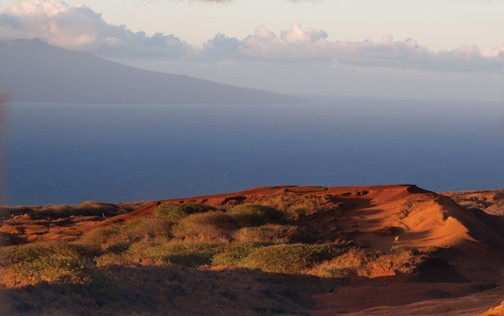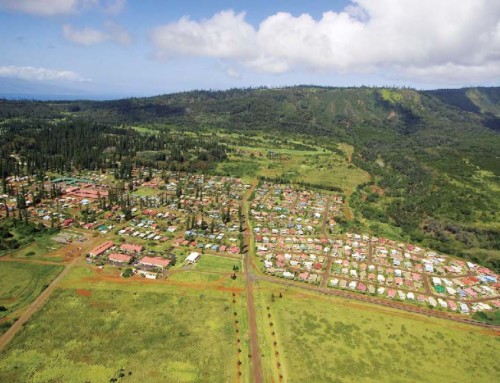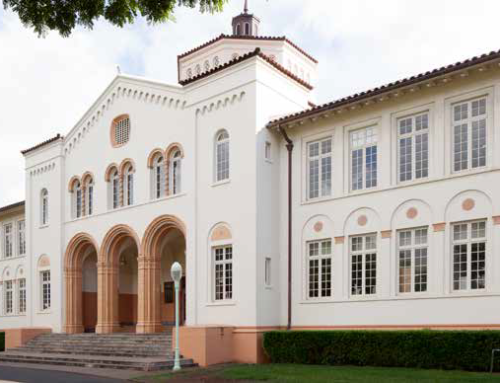“It is irreparable damage to such a beautiful place in return for very little for our community.” Robin Kaye
Photos: Courtesy of Robin Kaye
UPDATE: 2011
Public meetings were held on Maui, Moloka‘i and Lāna‘i to gather comments on a “programmatic” environmental impact statement on the Hawaii Inter-island Renewable Energy Program. A traditional cultural properties study of Ka‘a Ahupua‘a was completed in April of 2011 by Kepā and Onaona Maly for The Lāna‘i Culture & Heritage Center.
LISTED AS ENDANGERED IN 2011
Article Written By: Victoria Wiseman, HONOLULU Magazine
What Is It?
The Landscape of the 20,000-acre Ka’a Ahupua’a on the west side of Lāna‘i is unspoiled and mostly uncharted, with little known about the cultural importance of the area is undeniable: A limited 2011 survey identified 294 cultural features, such as ceremonial sites, petroglyphs, heiau and burial locations. The ahupua’a also serves an important community purpose, providing food to local subsistence hunters and fishers.
What Threatens It?
Historic preservation and the pursuit of alternative energy are both well-intentioned movements in society. However, not everyone agrees that both can happen in the Ka’ Ahupua’a.
In 2008, landowner Castle & Cooke Resorts LLC was permitted to build a 170-turbine, 400-Megawatt wind farm in the ahupua’a. Community group Friends of Lāna‘i is against the project. “It is irreparable damage to such a beautiful place in return for very little for our community,” says Robin Kaye. The construction of the turbines, roads, and power facilities would significantly alter the landscape, and all of the power generated would go to Oahu. The only benefit to Lāna‘i would be a handful of permanent jobs, he says.
In 2009, after public input, the Public Utilities Commission decided to reexamine the project and separate the wind farm from the undersea cable that would shuttle the energy from Lāna‘i to O‘ahu, which started the whole EIS process again for the Lāna‘i wind project. Harry Saunders, executive vice president of Castle & Cooke, says that, as of now, the revised proposal is to build a 200-megawatt wind farm with a 6,000 acre, 56-turbine array.
What Can Be Done?
There are still opportunities to strike a balance between the competing interests of historic preservation and sourcing alternative energy, though it doesn’t seem that the project will be stopped altogether. “We listen to community concerns,” says Saunders, pointing to previous projects on Lāna‘i, “We’ve built hotels on lands that had cultural sensitivities, and cut portions out to preserve [these] areas.” The company has publicly promised to give access to sportsman and visitors and touts a more comprehensive cultural survey in the works, a survey, he says, that would never have been done if not for this project.
There are still five or six years left in the EIS process, including several periods during which the project will be open to public comment. “I believe public input can have an impact on public policy,” says Kaye. “Public education and political will can stop this.”





